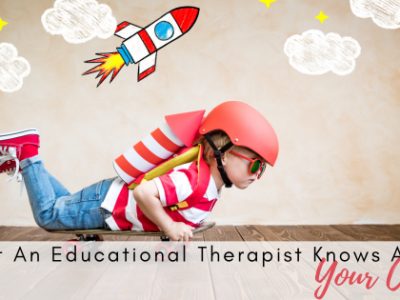
The 10-Step Guide To Dyslexia Therapy
Did you know that 20% of the U.S. population is affected by dyslexia? So many children and adults deal with the effects of dyslexia in their daily life—at school, at work, and even reading for daily, leisurely activities. Families and educators are often affected by dyslexia in a second-hand manner. Whether it’s parents seeking help for their student with dyslexia or teachers seeking out resources for students with dyslexia, this learning disability requires support and cooperation. Dyslexia therapy is a method that can help change the lives of people with dyslexia by helping them to develop better reading skills and by helping them to build more confidence. Read on to learn about the 10-Step guide to dyslexia therapy.
- Get diagnosed. Does your student have a learning disability, or something else like a vision or hearing problem causing issues with reading? It’s necessary to pinpoint the problem that could be causing your student’s difficulty with reading. That said, the first step to dyslexia therapy is getting a diagnosis from a qualified professional. Many families choose to work with educational psychologists for this step. Additionally, a dyslexia diagnosis can be given through testing at your local public school’s testing process. A diagnosis can help families to understand their student’s learning profile; a specific diagnosis can also help with developing a strong treatment plan for dyslexia.
- Engage with a qualified dyslexia therapy program. Working with a dyslexia therapist is different than working with tutors or teachers. There are many different types of professionals who specialize in dyslexia, so you want to ensure that you seek out a good fit for your student and your family. At Dyslexia on Demand, our therapy program employs Certified Academic Language Therapists (CALTs). These specially trained experts are qualified to implement therapeutic grade, Orton-Gillingham-based dyslexia intervention programs. Through therapy sessions, they help to provide diagnostic, explicit, systematic instruction. This work builds a high degree of accuracy, knowledge, and independence for students with dyslexia.
- Work out a plan for treatment. With dyslexia therapy, your therapist should work with you to develop a plan for dyslexia treatment that is customized for your student’s individual needs. At Dyslexia on Demand, CALTs work to teach phonics, use multisensory methods, and create tailored sessions for students. Dyslexia on Demand uses Take Flight Therapy, a program that provides comprehensive intervention for students with dyslexia. Its two-year curriculum helps to enable students to achieve and maintain better word recognition, reading, fluency, and comprehension. This program also focuses on helping students with the transition from dyslexia therapy instruction to a real-world setting.
- Stick with it. When it comes to dyslexia therapy, patience and persistence is essential for your student’s success. Learning to improve language skills can be so challenging for students with dyslexia. However, being patient and persistent is an important step in this journey. Celebrate small successes throughout the therapy, and know that improvement happens over time.
- There’s no place like home. Creating a supportive home environment for students with dyslexia is a key part of the process of working with dyslexia therapy. While sessions with CALTs at Dyslexia on Demand are frequent, it is important that parents, siblings, and the entire learning environment at home are working in support of your student with dyslexia. Whether this means creating a quiet place to study, a specific, special place for online therapy sessions, or simply offering understanding and guidance throughout the school year, being supportive is essential to student success.
- Be an advocate. You know that saying, it takes a village? It is never truer than when you’re a parent of a student with dyslexia. Working with a dyslexia therapist is one key component, but advocating for your child at their school—with educators and staff—helps ensure that your student will get the support he or she needs in the classroom. Ensuring your child has the right accommodations and modifications at school can enhance the effects of dyslexia therapy sessions.
- Teach your children well. Parents who advocate for their children can serve as role models in teaching those children to become advocates for themselves. Dyslexia therapy will help your child to be more successful with reading and academics; you can help your student to speak up for their needs and to ask for help when it’s needed.
- Connect with others. When you’re parenting a student with a learning disability, it’s easy to feel like you’re the only one living through this experience. There are so many families who have found great ways to help their students, like dyslexia therapy. Connecting with these families can be a great way to get support and advice.
- Celebrate success! Working through the steps of dyslexia therapy is a big commitment. At each stage, it’s ideal to acknowledge the hard work your student is doing with his or her dyslexia therapist. This helps students to stay motivated.
- Don’t lose focus. Your student is the reason for your journey into dyslexia therapy. Dyslexia therapy can support your child in living a successful life.
Do you want to learn more about dyslexia therapy? Dyslexia on Demand exclusively offers one-on-one or group therapy with CALTs four times per week. Our goal is to have students work solely with one therapist throughout their time with Dyslexia on Demand. Reach out to Dyslexia on Demand at (888) 292-3906 to learn more.







